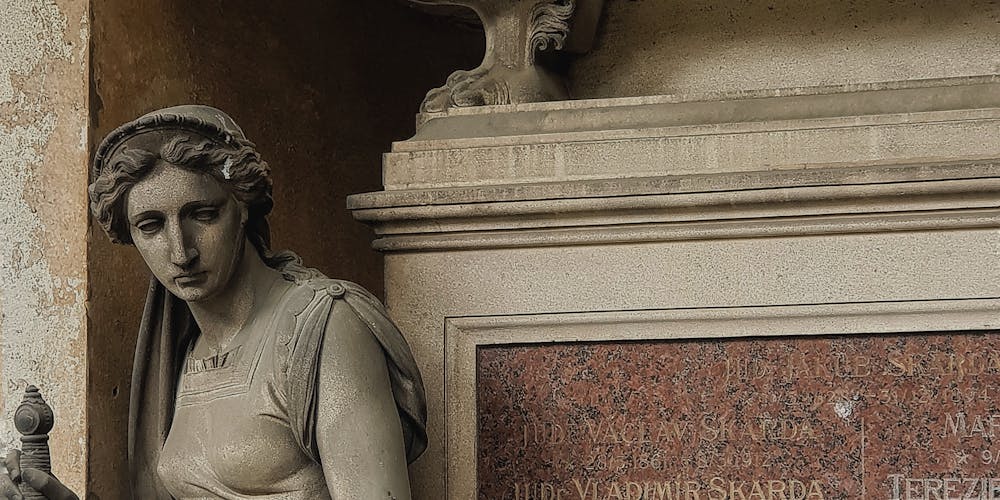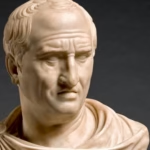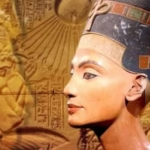The artistic expression found in funerary sculpture reveals an ancient and profound connection between life, death, and cultural beliefs. Funerary sculpture serves as more than mere decoration; it is a rite of passage, a tribute to those who have passed, and a communication bridge between the living and the departed. Through time, these sculptures have adorned tombs, mausoleums, and graves, echoing the sentiments of love, reverence, and memory. As art, they encapsulate the essence of a civilization’s understanding of mortality and the afterlife.
The Historical Landscape of Funerary Sculpture

The history of funerary sculpture is a reflection of the civilizations that created them, with each culture infusing its unique philosophies, aesthetics, and customs into their works. Across various epochs, we witness how such artistry evolved, adapted, and mirrored societal values.
Ancient Egypt: Immortality Carved in Stone

In ancient Egypt, funerary sculpture was intertwined with beliefs about the afterlife. Artists devoted themselves to crafting meticulous representations of the deceased, often idealized to reflect the individual’s status and virtues.
These sculptures were designed not merely for remembrance but served practical purposes in the journey toward the afterlife. The Egyptian belief system taught that the soul would require sustenance and companionship in the afterlife, leading to elaborate tomb decorations complete with statues, carvings, and even written spells.
The intricate carvings on sarcophagi depicted scenes from daily life or mythical narratives, offering a glimpse into the beliefs and customs of the time. This not only solidified the identity of the individual but also showcased the power of art as a medium connecting the earthly realm to the divine.
Greece: Humanism and the Celebration of Life
As we move forward to ancient Greece, we discover a shift in perspective regarding funerary sculpture. Greek artists began to focus on humanism, portraying the deceased not just as figures to be honored but as individuals deserving celebration.
Greek funerary sculptures often represented the deceased in lifelike forms, displaying not only physical beauty but emotion and personality. These pieces were typically placed in public spaces, fostering a sense of community remembrance.
The inclusion of inscriptions further personalized these sculptures, allowing the viewer to connect with the person being memorialized. In stark contrast to the Egyptian approach, Greeks emphasized the ephemeral nature of life and the importance of legacy. This focus on the human experience laid the groundwork for future artistic endeavors throughout history.
Roman Innovations and Cultural Diversity

The Romans built upon Greek traditions, introducing innovations that revealed a more diverse approach to funerary sculpture. Emphasizing family lineage and social status, Roman sculptures often included detailed portraits within grand architectural structures.
The use of busts became increasingly popular, showcasing the likeness of the deceased while celebrating their achievements and character. This practice turned funerary monuments into visual narratives, establishing a form of immortality through memory.
Moreover, Romans incorporated various influences from conquered cultures, enriching their funerary art with eclectic designs. This cultural exchange reflected their expansive empire and illustrated how funerary sculpture can be a testament to both individuality and collective heritage.
Symbolism and Meaning Behind Funerary Sculpture

While the aesthetic aspect of funerary sculpture is striking, the symbolism woven into each piece provides a deeper understanding of its purpose. Different elements may serve as metaphors for life, death, and the hope of rebirth.
The Power of Imagery

Imagery plays a crucial role in funerary sculpture, with symbols carrying profound meanings that speak to the psyche of the viewer. For instance, angelic figures represent guidance to the afterlife, while urns signify the preservation of memories.
Understanding the cultural context behind these symbols is essential. Analyzing how different societies employ imagery reveals not only their beliefs about the afterlife but also their interpretations of existence itself. The frequent use of motifs like laurel wreaths or crosses embodies humanity’s quest for peace and eternity.
The Language of Materials

Materials chosen for funerary sculptures carry significant weight in their interpretation. From marble and granite to bronze and clay, the selection reflects societal values and available resources. Marble, revered for its durability and beauty, suggests a longing for permanence and purity.
Additionally, the craftsmanship involved speaks volumes about the society’s level of skill and dedication. The intricate details in a well-carved statue may evoke admiration and respect, creating a connection between the observer and the subject contemplated within the piece.
Rituals Embedded in Art

Beyond their visual appeal, funerary sculptures are often entangled in rituals surrounding death. Their presence at burial sites signifies acts of mourning, remembrance, and celebration of life. The act of erecting a sculpture becomes an intimate engagement with grief and memory.
Such rituals can vary widely across cultures, influencing how art is integrated into the process of honoring the dead. The interplay between art and ritual conveys profound insights into how different societies cope with loss, addressing the universal need for closure and understanding.
Contemporary Perspectives on Funerary Sculpture

The relevance of funerary sculpture continues to persist, evolving alongside contemporary philosophical and cultural shifts. Modern approaches to funerary art reflect changing attitudes towards death and memory, challenging traditional norms.
Redefining the Concept of Death

In today’s fast-paced world, contemporary funerary sculpture often reinterprets death, moving away from solemnity toward a celebration of life. Modern artists may utilize unconventional materials and styles, encouraging viewers to confront mortality with a new lens.
Public installations and interactive sculptures invite participation, transforming traditional concepts of commemoration. By breaking away from classic forms, these contemporary works foster dialogue around death, exploring themes of impermanence and the legacies left behind.
Through this lens, funerary sculpture becomes a platform for self-reflection, prompting individuals to consider their relationships with those who have passed and the impact of their own lives.
Community and Collective Memory

Today, there is a growing emphasis on communal remembrance within funerary sculpture. Artists are engaging local communities in collaborative projects, creating works that embody shared experiences and collective grief.
This inclusive approach emphasizes the importance of memory as a communal endeavor rather than solely an individual one. The integration of personal stories transforms traditional monuments into living narratives, bridging the past and present.
Art becomes a vessel for shared emotions, enabling communities to navigate their histories and foster connections through collective mourning.
Environmental Consciousness

Contemporary funerary sculpture is increasingly intersecting with environmental consciousness. As discussions surrounding sustainability gain momentum, artists are exploring eco-friendly materials and practices in their creation.
This shift challenges conventional notions of permanence associated with funerary art, inviting people to consider alternative forms of remembrance that align with ecological principles. The result is a growing movement toward biodegradable plaques, natural materials, and landscape-based memorials, resonating with modern values of stewardship and interconnectedness.
Conclusion

Funerary sculpture transcends mere artistic expression; it embodies complex interrelations between life, death, culture, and memory. With roots deeply anchored in ancient traditions, these works reveal how humanity has grappled with existential questions for millennia.
From the grandeur of ancient Egyptian tombs to the innovative expressions found in contemporary art, funerary sculpture remains a powerful testament to the enduring nature of memory and legacy. It connects us across generations, reminding us of the fragility of life, the significance of community, and our continuous quest for meaning beyond mortality. As we engage with these artistic creations, we uncover layers of cultural philosophy that resonate deeply within us, urging reflection on our own existence and the marks we leave behind.








